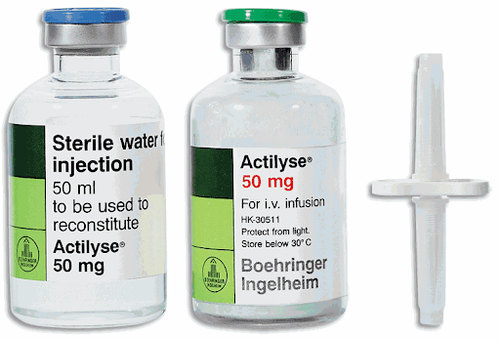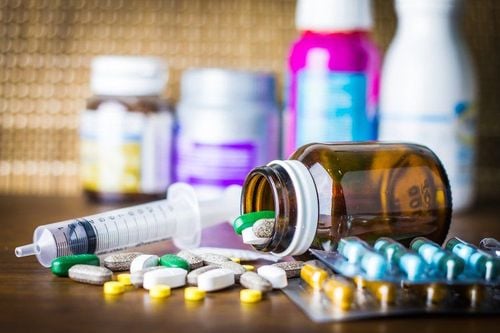This is an automatically translated article.
Recommendations for Early Management of Ischemic Stroke provides an overview of the available evidence for the evaluation and treatment of ischemic stroke in adults. This recommendation is primarily aimed at clinicians and emergency personnel to treat patients within the first 48 hours after ischemic stroke.
1. Purpose of recommending early treatment of ischemic stroke
English stroke called Stroke. Ischemic stroke is a process that causes a cerebral artery to narrow or occlude, thereby leading to a decrease in blood flow in the brain area due to the distribution of necrosis of the artery, dysfunction of the brain area and the manifestation of cerebral infarction. neurologic symptoms in the affected brain area.
The main cause of ischemic stroke is a blood clot in a cerebral artery causing narrowing, blockage of a cerebral artery or an embolism originating in the cardiovascular system (cardiovascular stroke), according to the circulatory system to the brain.
Ischemic stroke is a medical emergency. Therefore, when detecting warning signs of stroke, it is necessary to immediately transfer to the nearest medical facility to reduce the mortality and disability rate for patients.
Ischemic stroke if it is treated at the right time of the golden hour (3 - 4.5 hours) with intravenous thrombolytic drugs to increase the possibility of saving lives and limiting sequelae. However, the process of transporting stroke patients with cerebral infarction also needs attention and when going to medical facilities, emergency treatment must be handled urgently according to the correct procedure.
Recommendations for Early Management of Ischemic Stroke provides an overview of the available evidence for the evaluation and treatment of ischemic stroke in adults. This recommendation is intended primarily for clinicians and emergency personnel to treat patients within the first 48 hours of ischemic stroke.

Sử dụng thuốc tiêu huyết khối đường tĩnh mạch cho bệnh nhân đột quỵ nhồi máu não vào đúng thời điểm giờ vàng làm tăng khả năng cứu sống
2. Guidelines for early management of ischemic stroke are recommended
The issue of guidance (Guideline) for early treatment of ischemic stroke has a very important role in helping patients avoid the risk of death and limit sequelae.
According to the 2019 stroke guidelines, community programs should focus on the stroke care system and prompt emergency care. At the same time, the patient and others need to know the number of first aid and first aid for stroke. The Ministry of Health also recommends that the transport time should be minimized and in order to increase the number of patients being treated and the quality of care, doctors, medical staff, and emergency personnel need to have programs in place. stroke training.
In addition, some guidelines for early management of ischemic stroke should be noted as follows:
The stroke assessment system should be used by first responders. At the same time, emergency workers should start treating the stroke patient and notify the hospital in advance before the patient is transferred to receive the patient; Emergency leaders should work with other departments to develop a patient rotation system and protocol to ensure that patients with stroke or suspected transient stroke are quickly diagnosed; A regional system of care is required during primary emergency care, including intravenous rTPA and endovascular-capable centers with good periprocedural care; Patients with a diagnosed or suspected transient stroke should be referred to the nearest hospital that uses intravenous rTPA. Stroke center accreditation should be performed by an independent external agency. A protocol should be in place for the emergency evaluation of patients with suspected stroke and for establishing door-to-needle time goals. Also establish a secondary goal of door-to-needle time of at least 50% of patients within 45 minutes.

Bệnh nhân đội đột quỵ nhồi máu não cần sử dụng các phương pháp chụp X quang xét nghiệm để đánh giá
People with ischemic stroke should be carefully evaluated by doctors and nurses using X-ray and laboratory methods. If radiologists are not available in some places, a remote consultation system of doctors is required. It is necessary to establish an emergency non-invasive intracranial vascular imaging system so that the patient can reach the place of endovascular intervention. However, mechanical thrombectomy should be performed in an experienced center. Hospitals with stroke care should develop, use, or incorporate up-to-date guidelines for stroke by the Ministry of Health and International. To improve quality of care, it is best to have an intra-hospital and inter-hospital transport protocol. Concurrently participate in the stroke data collection system to continuously improve the quality of care for patients with ischemic stroke. At the same time, hospitals should have systems in place to assess and improve the quality of stroke care. Participation in the stroke data collection system is needed to continuously improve the quality of stroke care and to use the severity score scale. For patients with suspected stroke who should have brain imaging on arrival at the hospital, in most cases the use of a non-contrast CT scan can provide the necessary information in diagnostic treatment. Noninvasive intracranial angiography is required in patients who qualify for interventional angiography, but imaging should not delay intravenous rTPA. Patients with ischemic stroke who are eligible for interventional angiography and require non-invasive intracranial angiography with CTA can be taken before blood creatinine results are available in people without a history of renal failure. If you meet the criteria for vascular intervention, you need to take extracranial vertebrae in addition to intracranial circulation and carotid vascular imaging. The collateral circulation should be assessed in patients with indications for vascular intervention. For laboratory tests, only blood glucose is required prior to administration of rTPA IV. ECG, Troponin, and chest radiograph should be performed but should not delay rTPA administration. In patients with hypertension and rTPA indicated, the diastolic blood pressure < 110 mmHg and systolic blood pressure < 185 mmHg should be adjusted prior to rTPA administration. In case of hypertension and indications for vascular intervention but not using rTPA, blood pressure should be adjusted to 185/110 mmHg or less before the procedure. If the patient has a fever > 38 degrees Celsius, the cause must be diagnosed and treated to reduce fever. If the patient has an elevated blood sugar, it is necessary to bring the blood sugar back to normal.

Bệnh nhân có tăng huyết áp và chỉ định dùng rTPA điều chỉnh huyết áp từ 185/110 mmHg trở xuống trước khi thực hiện
If the patient has a fever > 38 degrees Celsius, the cause must be diagnosed and treated to reduce fever. If the patient has an elevated blood sugar, it is necessary to bring the blood sugar back to normal. Patients with mild stroke can be treated with intravenous rTPA for 3 h and 4.5 h of onset, and the benefits and risks should be weighed. Patients with MRI with minimal microbleeding can be treated with intravenous rTPA if indicated. For patients with ischemic stroke who are treated with fibrinolysis, doctors should note that there are additional treatment options for side effects. For patients on intravenous alteplase, the benefit is time-dependent and should be treated as quickly as possible. Mechanical thrombectomy with stent retriever if patient has mRS before stroke 0-1; aortic occlusion or M1; over 18 years old; NIHSS 6 or higher; ASPECTS score of 6 or higher and groin puncture is possible within 6 hours of illness onset. Patients with major vessel occlusion, 6-16 hours from onset, who met the DAWN or DEFUSE 3 criteria, could undergo mechanical thrombectomy. Mechanical thrombectomy should be performed as soon as possible and can be done at the same time if extracranial and intracranial vascular occlusion is present, but blood pressure should be maintained during the procedure and for 24 hours after the procedure. from 180/105 mmHg or less. In mild stroke, dual antiplatelet therapy should be given for 24 hours and maintained for 21 days. Acute stroke antihypertensive treatment can be initiated early if comorbidities are present. Hypotension and hypovolemia should be corrected to maintain the level of systemic perfusion necessary to maintain organ function. Check for dysphagia before eating, drinking or taking medication. Enteral feeding should be initiated within 7 days of hospitalization in patients with ischemic stroke. Patients with dysphagia should eat through a nasogastric tube at an early stage and an oral hygiene protocol should be followed to reduce the risk of aspiration pneumonia. With the patient lying motionless, give intermittent air compressions to reduce the risk of deep vein thrombosis. Patients with depression after ischemic stroke should take antidepressants if there are no contraindications. Indications for ventricular drainage in acute hydrocephalus due to obstruction due to cerebellar infarction. Open the suboccipital skull to decompress if the patient with cerebellar infarction has a neurological condition that compresses the brain stem despite aggressive medical treatment. Decompressive craniotomy for patients aged 60 years or younger with unilateral middle cerebral artery infarction and worsening neurological status within 48 hours despite aggressive medical treatment.

Trường hợp bệnh bị co giật tái phát không nên dùng phòng ngừa thuốc chống động kinh
If the patient has recurrent seizures, treatment should be similar to that of other acute neurological conditions and antiepileptic agents should be chosen individually. However, antiepileptic drugs should not be used prophylactically. Routine echocardiography is not indicated for all patients with acute ischemic stroke. However, echocardiography may be indicated in some patients with acute ischemic stroke to provide additional information in secondary prevention. Baseline troponin testing should be indicated but should not delay intravenous alteplase therapy or vascular intervention. Patients with non-cardiac ischemic stroke should use antiplatelet drugs rather than anticoagulants to reduce the risk of recurrent stroke or other dangerous complications. In patients with noncardiac ischemic stroke who are taking antiplatelet drugs, switching to warfarin will not be beneficial for secondary prevention. However, patients with non-cardiac ischemic stroke need to choose antiplatelet agents depending on risk factors, tolerability, relative efficacy, and a number of other factors. Patients with unstable angina and coronary stenting may receive antiplatelet therapy and oral anticoagulation. In patients with an infarction caused by atrial fibrillation, oral anticoagulation can be started 4-14 days after the stroke. In patients with ischemic stroke and hemorrhagic transition, initiation or continuation of antiplatelet or anticoagulant therapy may be considered depending on the clinical picture and the underlying indication. Patients with dissection of the extracranial or vertebral arteries, or stroke or ischemic stroke, can be treated with antiplatelet drugs or anticoagulants for 3-6 months. For patients who were taking statins at the time of stroke, they can continue to take them during the acute phase. High-dose statin therapy should be used in female and male patients 75 years of age and younger with atherosclerotic cardiovascular disease but no contraindications. In case patients do not take high-dose statins because of contraindications or risks of side effects, a moderate-dose statin can be substituted. When revascularization is indicated in patients with mild, non-disabled infarction (mRS 0-2), the procedure should be performed between 48 hours and 7 days rather than later in the absence of contraindications. In addition, patients who smoke should be advised to quit smoking, and should also avoid passive smoking (inhaling secondhand smoke); educate patients about stroke; provide information, recommendations, and opportunities to talk about the disease's impact on daily living.
Patients need to be given first aid and taken to a reputable hospital for examination and treatment as soon as there are signs of ischemic stroke. Currently, Vinmec International General Hospital is one of the leading prestigious hospitals in the country, trusted by a large number of patients for medical examination and treatment. Not only the physical system, modern equipment: 6 ultrasound rooms, 4 DR X-ray rooms (1 full-axis machine, 1 light machine, 1 general machine and 1 mammography machine) , 2 DR portable X-ray machines, 2 multi-row CT scanner rooms (1 128 rows and 1 16 arrays), 2 Magnetic resonance imaging rooms (1 3 Tesla and 1 1.5 Tesla), 1 room for 2 levels of interventional angiography and 1 room to measure bone mineral density.... Vinmec is also the place to gather a team of experienced doctors and nurses who will greatly assist in diagnosis and detection. early signs of abnormality in the patient's body. In particular, with a space designed according to 5-star hotel standards, Vinmec ensures to bring the patient the most comfort, friendliness and peace of mind.
Please dial HOTLINE for more information or register for an appointment HERE. Download MyVinmec app to make appointments faster and to manage your bookings easily.













